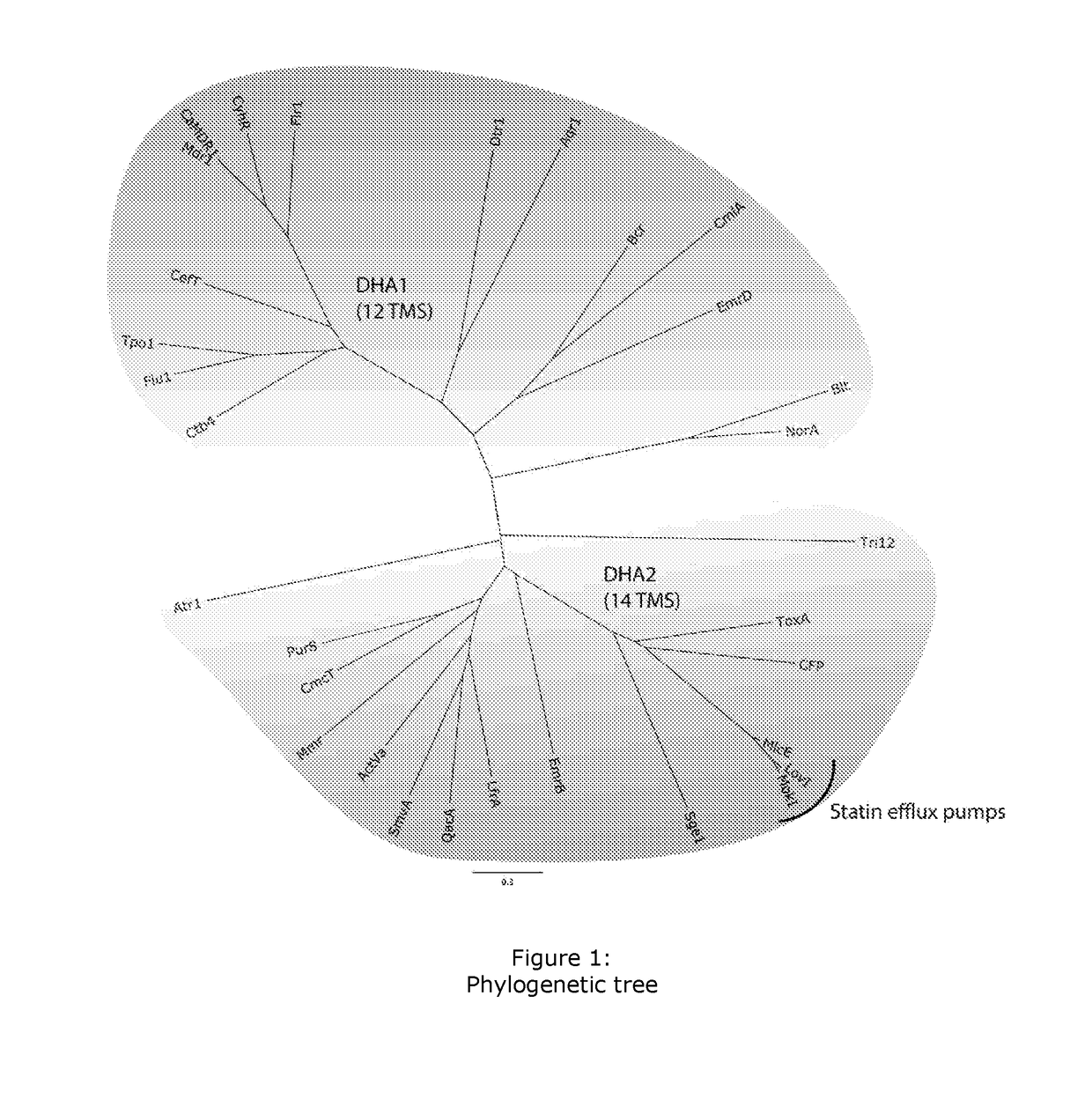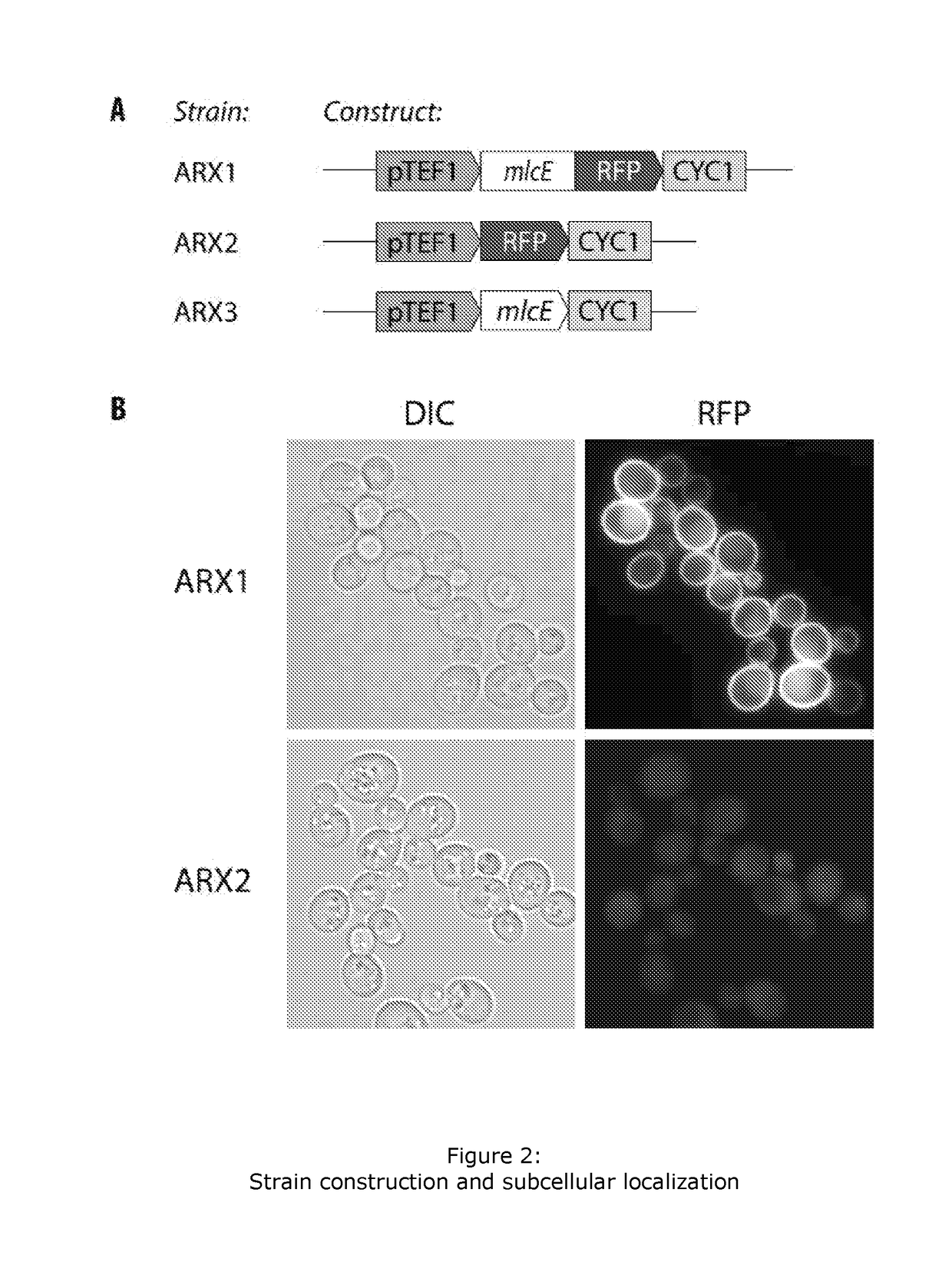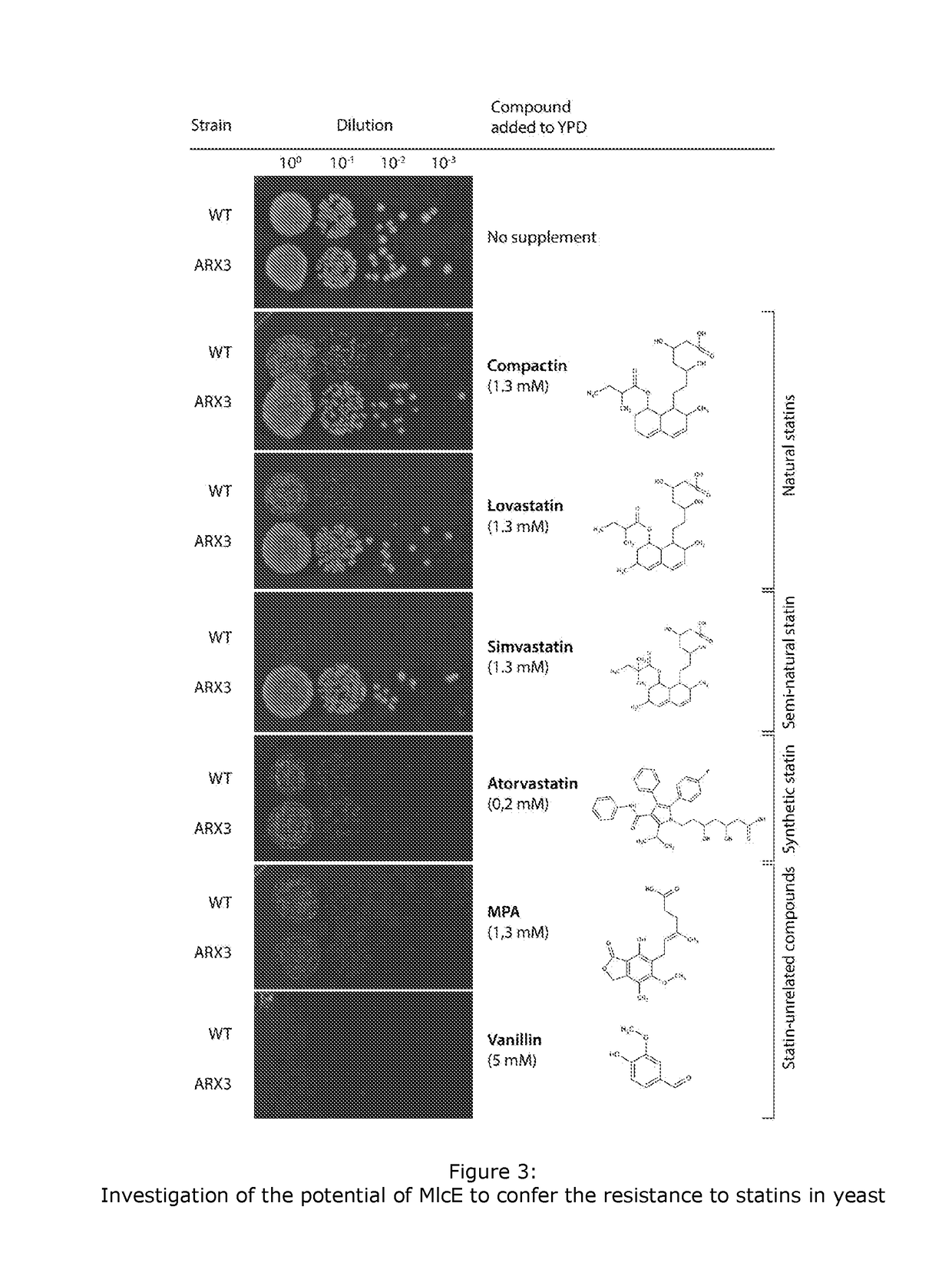Statin resistance and export
- Summary
- Abstract
- Description
- Claims
- Application Information
AI Technical Summary
Benefits of technology
Problems solved by technology
Method used
Image
Examples
example 1
Integration of the mlcE Gene into Saccharomyces cerevisiae
[0143]General Setup
[0144]The mlcE gene was codon optimized and expressed from a genomic locus in Saccharomyces cerevisiae as a single copy gene under the control of a strong constitutive promoter (TEF1). The gene was introduced into a ‘wild type’ strain and a pdr5 deletion strain (pdr=Pleotropic Drug Resistance gene). The pdr5 gene encodes a pump that has shown to confer a basic level of statin-resistance in Saccharomyces cerevisiae (Hirata & Yano, 1994; Riccardo & Kielland-Brandt, 2011). Furthermore, it has previously been shown that elimination of the pdr5 gene sensitize the strain in question which, in turn, allows for a larger dynamic test range with respect to statin effects.
[0145]The efflux pump encoding gene mlcE was integrated into a defined locus of Saccharomyces cerevisiae, CEN.PK 113-11C (MATa MAL2-8C SUC2 his3Δ ura3-52), genome using a yeast expression platform established by Mikkelsen et al. 2012
[0146]The yeast ...
example 2
[0157]An initial sequence comparison investigation of the putative efflux pump MlcE from the compactin biosynthetic gene cluster using Standard Protein BLAST showed that this protein strongly resembles some of the known export proteins from the major facilitator superfamily (MFS), such as crystal violet efflux pump Sge1 from Saccharomyces cerevisiae and HC-toxin efflux pump ToxA from Cochliobolus carbonum. Moreover, prediction of MlcE topology using the TOPCONS server suggested that MlcE comprises 14 transmembrane-spanning regions (TMS), possibly classifying MlcE to the Drug:H+ antiporter 2 family (DHA2; 14 TMS) of the MFS drug transporters, a family which ToxA and Sge1 belong to as well. The inventors of the present application constructed a phylogenetic tree, which suggests that MlcE, together with its orthologs from the lovastatin and monacolin biosynthetic gene clusters, LovI and MkI, respectively, does indeed belong to the DHA2 family of drug resistance protein...
example 3
Toxicity Analysis on Dilution Tests
[0158]The constructed strains response to different lovastatin levels present in the growth medium were tested using a agar-plate dilution assay (also known as a spot assay). Overnight cultures of the four Saccharomyces cerevisiae strains (wt, ARX3, AR29 pdr5Δ, pdr5Δ,) were diluted to OD600 of 0.2 and a fivefold dilution series for each strain was made. Four microliters of each dilution were deposited on a series of agar plates with different concentrations of activated lovastatin (0 mM, 0.74 mM, 1.98 mM). The idea behind this assay is that it allows for reproducible testing of toxic effects by observing at which dilution steps the different strains are able to form visible colonies, under a given concentration of the toxic compound. The growth of the individual strain as a function of time was recorded by photography.
[0159]The plate assay (FIG. 4) confirmed that the pdr5Δ, strain is more sensitive to lovastatin than the wild type (wt), as evidence...
PUM
| Property | Measurement | Unit |
|---|---|---|
| Fraction | aaaaa | aaaaa |
| Fraction | aaaaa | aaaaa |
| Fraction | aaaaa | aaaaa |
Abstract
Description
Claims
Application Information
 Login to View More
Login to View More - R&D Engineer
- R&D Manager
- IP Professional
- Industry Leading Data Capabilities
- Powerful AI technology
- Patent DNA Extraction
Browse by: Latest US Patents, China's latest patents, Technical Efficacy Thesaurus, Application Domain, Technology Topic, Popular Technical Reports.
© 2024 PatSnap. All rights reserved.Legal|Privacy policy|Modern Slavery Act Transparency Statement|Sitemap|About US| Contact US: help@patsnap.com










